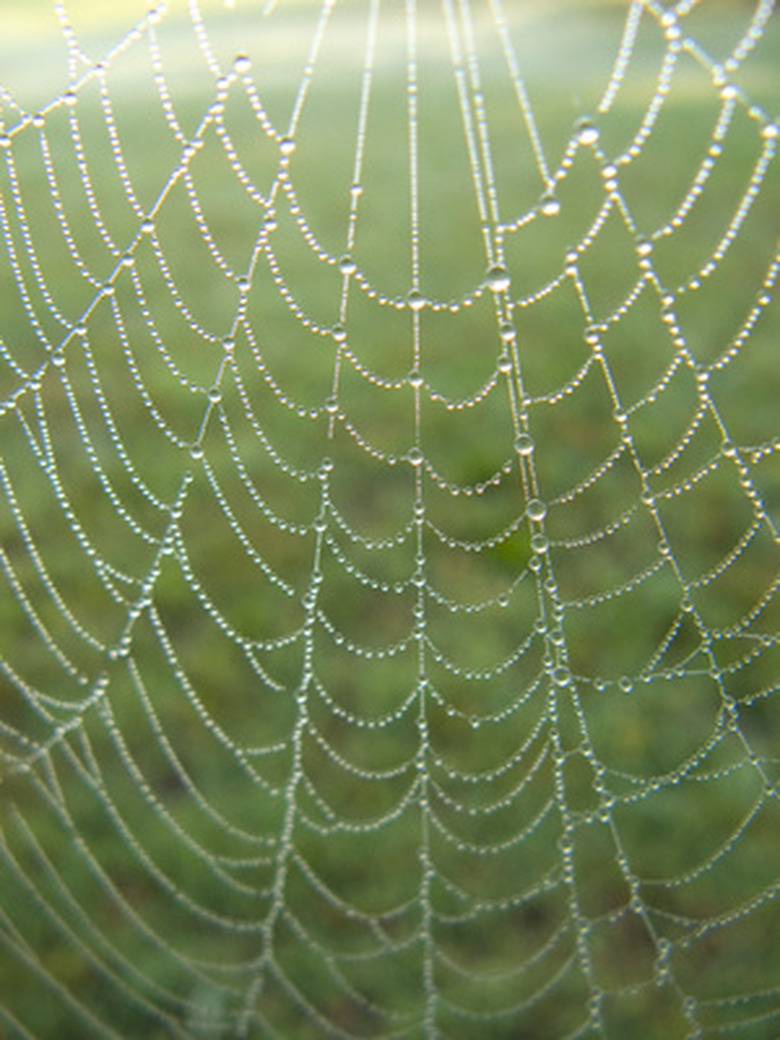Information On The Palm Spider
Palm spiders are found in the warm climates of Southern Africa and the islands of the Indian ocean. The Palm spider is also known by its Latin name Nephila inaurata and as the red-legged golden orb spider.
It is a large spider, which can grow to the size of a soup dish. It also constructs huge webs which it rarely leaves. It is part of the Nephila genus of spiders. In this post, we'll go over what these spiders look like, what they eat, how they construct their webs, their reproduction characteristics and more.
Palm Spider Webs
Palm Spider Webs
Palm spiders find walking on the ground difficult and thus spend nearly all their time on their webs. Palm spiders construct very large orb webs usually between trees or bushes.
The spider's webs are usually built at a distance of 1.5 to 6 meters above the ground. The silk of the palm spider is extremely strong and golden in color.
The angled webs of the spider are designed to catch large insects, small birds are sometimes caught in the web but are rarely eaten.
The female spider usually hangs in the center of the web while one or more male hangs on the webs periphery. Male palm spiders are many times smaller then the female spider and have swollen pedipalps.
Reproduction
Reproduction
Palm spiders reproduce in the same way as all Nephila spiders, the male spins a small sperm web onto which he deposits sperm which he then suck up into his pedipalps. The male then approaches the female when she is busy feeding.
He inserts his pedipalps, one after another, into her genital opening, which is on the underneath of her abdomen. Copulation can last up to 15 hours, afterwards the male retreats, exhausted, to a safe place.
Eggsacs and Spiderlings
Eggsacs and Spiderlings
The female spider once fertilized produces eggs. When the spider is ready to lay her eggs, she selects a suitable site and builds an egg sac using special white silk, which differs from her usual golden silk.
It takes two weeks for the young spiders to hatch inside the egg sac. They are still embryos at this point and living of the egg yolk.
Their mouth parts, venom glands, spinning organs and digestive tract are undeveloped. Once these body parts have been properly developed and all the yolk has been absorbed, the stronger young spiders eat the weaker before dispersing.
Palm Spider Appearance, Diet, and Location
Palm Spider Appearance, Diet, and Location
The Palm spider, or Nephila inaurata, has a black, silver, and reddish brown torso with red and black legs. Like all spiders of the species Nephila, it feeds on flies, mosquitoes, moths, wasps and beetles. Because of its large size, it has also been known to eat small birds and bats that get caught up in its web.
The palm spider is found in Southern Africa and on several islands in the Indian Ocean including the Seychelles, Reunion, Mauritius and Rodrigues. While they look quite scary and intimidating, their bite isn't truly dangerous and it won't kill a human. It will likely just result in an unpleasant skin reaction.
Species
Species
The Palm spider belongs to the family Tetragnathidae and the subfamily Nephilinae. There are two genera of Nephilinae: Nephila (Golden orb-web spiders) and Nephilengys (hermit spiders). The palm spiders is a Nephila and thus a type of Golden orb-web spider, hence its other name the red-legged golden orb web spider.
In the genus Nephila, there are two other species: Nephila pilipes fenestrate (black-legged golden orb-web spider) the Nephila senegalensis annulata (banded-legged golden orb-web spider). The palm spider's full scientific name is the Nephila inaurata madagascariensis.
Cite This Article
MLA
OwenCogan, . "Information On The Palm Spider" sciencing.com, https://www.sciencing.com/information-palm-spider-6638848/. 22 November 2019.
APA
OwenCogan, . (2019, November 22). Information On The Palm Spider. sciencing.com. Retrieved from https://www.sciencing.com/information-palm-spider-6638848/
Chicago
OwenCogan, . Information On The Palm Spider last modified March 24, 2022. https://www.sciencing.com/information-palm-spider-6638848/
